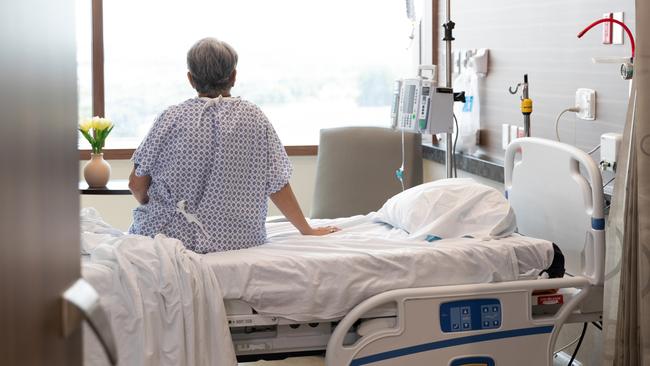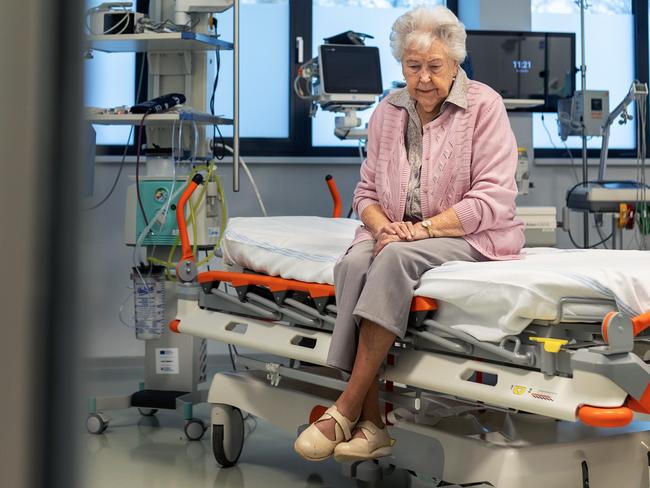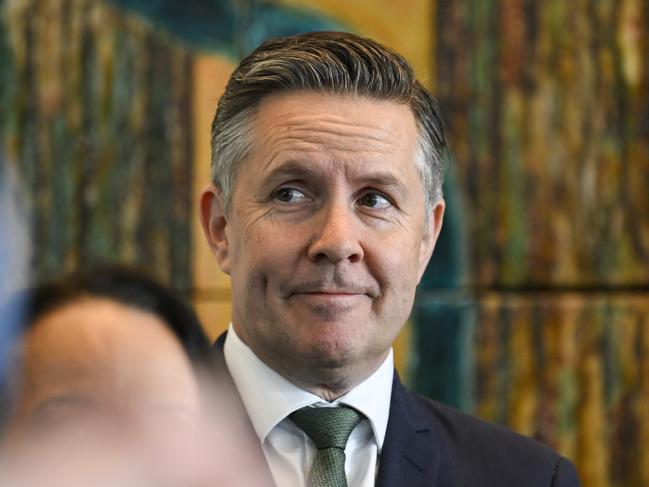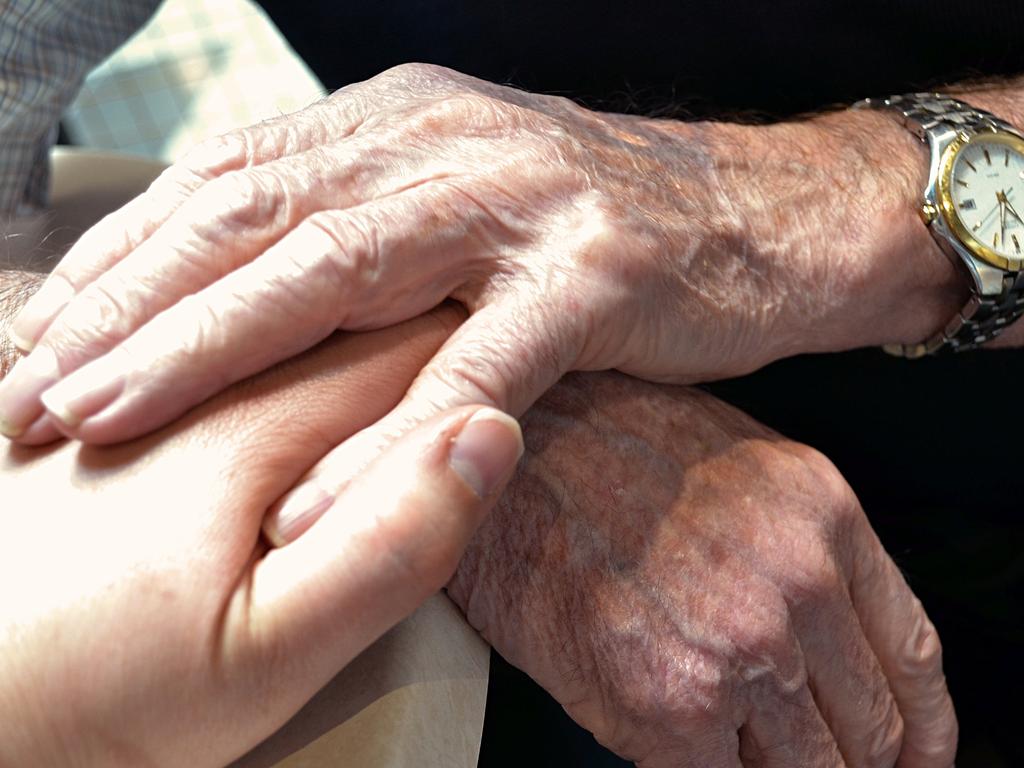Health system failure: ‘cruel and inhumane’ treatment of dying woman
A dying woman’s first person account of her appalling healthcare after being diagnosed with a terminal illness has sparked calls for urgent change.

Leaving a pain-riddled patient to fight for access to health, palliative and aged care services after exiting hospital with a terminal diagnosis is cruel, inhumane and unfortunately a regular occurrence in Australia’s fractured health system, a leading voice in community health says.
Rodney Jilek, managing director of care provider Community Home Australia, said an anonymous first person account of a dying woman’s final weeks published by The Australian on Wednesday was a brutal reminder of where the health system found itself for those needing end-of-life support.
Read the anonymous first person account of a dying woman’s final weeks in care here.
“I think this lady’s situation is representative of what happens regularly across the health, aged care and disability systems,” Dr Jilek said.
“A person discharged from hospital should be linked to care services on their return home. They shouldn’t have to navigate their own way through the system to get them.
“I think there’s almost a belief that after a person is discharged from hospital there will be someone ready to pick up the ball and keep running, but it’s not the case.”
The shocking story has also raised the issue of emergency department “ramping” for palliative care candidates, while the federal Health Minister has highlighted plans to offer end-of-life care at home, despite the woman pointing out the current lengthy waiting period for help even for those who have weeks to live.
The unnamed woman, who lived in the Gold Coast Hinterland and was an academic at Bond University in Queensland, died this week aged 74 after the recurrence of cancer in late January.

She wrote of the many failings of her care in the weeks since a specialist told her that “nothing can be done”, in the hope that it would lead to change for those who follow her.
Those failings, which she said amounted to a “broken system”, included being forced to provide private health details in a crowded public emergency ward and being sent home after a devastating diagnosis with no palliative discharge plan.
No one checked if her elderly husband was capable of providing the caregiving support she needed, and some pamphlets and a helpline number was all that was offered on leaving hospital.
The woman was unable to access adequate pain relief for up to a week, and at one stage was left with no option but to travel three hours for a medical appointment to discuss a biopsy despite barely being able to walk.
And her effort to secure aged care support was met with the news an assessment would take 12 to 5 months – when she had just weeks to live.
“You would think that being discharged with a terminal illness would trigger immediate support, especially for someone needing help with basics such as walking and bathing. Think again,” she wrote.
It was only after an intervention from Dr Jilek, who hit his contact book to find available supports, that the woman found a modicum of help.

While the states are responsible for the hospital system and the federal government responsible for primary care and aged care, Dr Jilek said those in pain and needing support don’t care about where their support is coming from, and nor should they need to.
“The arbitrary lines drawn between governments aren’t translating to a continuum of care that a person needs at that most painful and difficult time in their lives.”
Peter Allcroft, a palliative care doctor and chair of Palliative Care Australia, said the woman’s story was “powerful and, sadly, not isolated”.
“It’s not an uncommon story for people to be discharged from hospital without a referral to a palliative care service,” Dr Allcroft said.
“No doubt there is pressure to clear beds, to not admit patients, or to empty a bed,” he said.
“There are penalties in some emergency departments if a patient is in there for more than four hours. It’s a KPI.
“When you see people ramped at EDs, it often tends to be palliative care candidates with painful chronic conditions but not in life-threatening situations,” he said.
Asked to respond to the woman’s account of her end-of-life care, and whether we as a country should be doing better for people in the same situation, federal Health Minister Mark Butler said “Australians should have comfort and security during their final months”.

“As part of our aged care reforms, for the first time people will be able to receive support at home packages for end-of-life care in their home in their final 12 weeks, rather than having to go to hospital for their final moments on this Earth,” Mr Butler said.
“This will complement palliative care services delivered by states and territories.”
Queensland Health Minister Tim Nicholls said it was “impossible to read the ‘My Story’ article published in The Australian without recognising the need to address and improve the delivery of palliative and end of life care for our fellow Australians”.
“My condolences to the family who have lost a very special person. I acknowledge that getting the right care shouldn’t be this hard for anyone and understand that poor access to health services can greatly impact both quality of care and quality of life for Queenslanders living with a chronic or terminal illness.
“Our government is committed to improving access to essential health services for everyone, like the North Queensland persistent pain management service officially opened this week in Townsville, regardless of where they live in Queensland,” Mr Nicholls said.
“The Federal Minister for Health Mark Butler has responsibility for the provision of end of life care and I expect he will address this sensitive issue from a whole of Australia perspective.”
In her account of her final weeks, the woman who died on Monday wrote that she contacted MyAgedCare only to be told she could not access care without an assessment.
“The wait time? Twelve to 15 months. The cruel reality? I have a short time to live,” she wrote.
So what needs to happen?
Palliative Care Australia’s pre-election submission calls for palliative care services outside hospital settings to be made more readily available, as it can save money by keeping people out of EDs and wards.
This includes financially supporting those in primary care to deliver services to palliative patients that aren’t currently billable to Medicare.
Both Dr Allcroft and Dr Jilek said governments must put a focus on making the system more streamlined for patients at such a difficult time in their lives.
And governments should redress the dearth of end-of-life support for those Australians living in regional areas.
Read the anonymous first person account of a dying woman’s final weeks in care here.





To join the conversation, please log in. Don't have an account? Register
Join the conversation, you are commenting as Logout